Astrometry Program

Triple Star System
BRIEF (Boyce-Astro) encourages research in astrometry. Many students find their initial experience in the DoubleSTARS™ so interesting that they want to continue their studies further or become mentors for beginning students in the area. After all, astrometry is the foundation for modern astrophysics and continues to be an exciting area of research with space-based programs such as Hipparcos and now GAIA.
Astrometry is the branch of astronomy that involves precise measurements of the positions and movements of stars and other celestial bodies. Astrometric measurements provide information on the motions and physical origin of the solar system, asteroids and comets and the Milky Way. Today much of the focus is on double stars and star formation; astrometry also contributes heavily to the determination of the distribution of dark matter in galaxies.
Our Astrometry Program includes:
- Visual Double and Multiple Star System measurement with CCDs
- Common Proper Motion Star measurement with CCDs
- Modeling of Stellar motions
- Close Binary Star measurement using speckle interferometry – coming in 2019
In 2018 and 2019 much of our emphasis is to document the “best practices” for visual double star measurement with CCDs. Though these CCD measurements are routinely reported in the Journal of Double Star Observations (JDSO) and the Washington Double Star catalog (WDS), a methodology for reliably repeatable measurements is not well documented.

Multiple Star System and Star Formation
In 2017 and 2018 a broad survey project called “STATS” conducted by two students created an underlying database of 700 observations from 13 telescopes to start this area of research.
Four stars with predicted ephemerides were measured during the winter of 2017 – 2018. The results were presented at the Annual Society for Astronomical Sciences Symposium IN June 2018. The data and results are available here.
BRIEF welcomes collaborators to extend this research. Please contact CIO @ boyce-astro.org for further information on the data for your research project.
LINK STATS HERE
LINK DATA HERE
- Data from the STATS project indicated J703’s orbit is incorrect; follow up observations, report and compare these to the ephemeris
- STF 911 has extensive observations already made in the STATS project; report and compare these to the ephemeris
- STF579 has two rectilinear solutions; use the extensive STATS project data to clarify these ephemerides
- POU1245 has extensive observations already made in STATS project; report and compare these to the ephemeris
- Use STATS project data to assess accuracy of the various measurement tools for wide doubles
- Use STATS project data to assess the accuracy of PSF photometry methods for measurement of double stars
- Thorough statistical analysis of the STATS data to refine initial impressions; identify most important areas for
- improvement
- Recommend criteria that indicate treatment as a measurement outlier or unreliable observatory system
- Remeasure all STATS images by different analysts to determine the human impact on measurements
Research needing additional observations
- Repeat STATS observations in winter 2018/2019 with refined methods to measure improvements; recommend best practices
- Assess accuracy of smaller telescopes of 6″ 10 14″ aperture; extend the STF911 data sets
- Assess the impact of various filters upon the accuracy and uncertainty of double measurements
- Assess the limits to measuring close double stars with CCDs; can 3″ be reliably achieved and how
- Assess impact of CCD saturation across wider range of double separations; vary by separation
- Test to determine the optimum pixel radius for centroid calculations; vary by separation
- Measure same doubles over time to determine the time separation warranting a separate measurement report
- Further comparison double measurements made from “identical” systems in different locations
Recommended best practices from these papers – final paper by early 2020
We will also undertake Common Proper Motion projects if teams are formed.
When new observatory capabilities become available, are tested, and are ready for remote operation, we will undertake speckle interferometry of close double stars. The system will be able to measure stars with separations even below 0.5 arcseconds – even closer than those in this picture. Such close stars will provide more opportunities for calculating orbits.

Examples of Speckle Interferometry
If these kinds of projects interest you, sign up for more information below.
